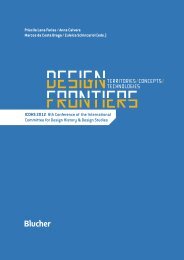Urban Climate News - FAU
Urban Climate News - FAU
Urban Climate News - FAU
You also want an ePaper? Increase the reach of your titles
YUMPU automatically turns print PDFs into web optimized ePapers that Google loves.
<strong>Urban</strong> Projects 25<br />
Characteristics of the UHI in a high-altitude metropolitan city,<br />
Ulaanbaatar, Mongolia<br />
Introduction<br />
The urban heat island (UHI) is known as the higher<br />
near-surface air temperature in an urban area than in<br />
its surrounding rural area. Its causative factors are well<br />
known. These include anthropogenic heat, impervious<br />
surfaces, and three-dimensional urban geometry (Ryu<br />
and Baik 2012). Anthropogenic heat is an important causative<br />
factor, especially in the nighttime (Fan and Sailor<br />
2005). The sensible heat flux is larger and the latent heat<br />
flux is smaller in urban areas than in rural areas owing<br />
to the high heat storage capacity of urban surfaces and<br />
the low surface moisture availability of less vegetated<br />
urban surfaces. Relationships between meteorological<br />
parameters/weather conditions and UHI intensity are investigated<br />
in a number of studies (e.g., Unger 1996; Kim<br />
and Baik 2002). An ideal meteorological condition for<br />
UHI development is a stable, calm, and clear sky condition<br />
(Oke 1982). The UHI intensity depends on the time<br />
of day and the season. Strong UHI intensity more frequently<br />
appears in winter than in summer in many cities<br />
around the world (e.g., Figuerola and Mazzeo 1998; Liu<br />
et al. 2007). In this study, the characteristics of the UHI<br />
in Ulaanbaatar, the capital of Mongolia, are for the first<br />
time investigated.<br />
Study area and data<br />
Mongolia is situated in an area between permafrost<br />
to the north and desert lands to the south. Ulaanbaatar<br />
is the economic, social, political, cultural, and educational<br />
center of Mongolia. The city is located at an altitude of<br />
about 1350 m and in a valley. The area belongs to a cold<br />
semi-arid climate. Ulaanbaatar is known as the coldest<br />
capital city in the world because of its geographic features<br />
such as high altitude and landlocked location and<br />
the effects of the wintertime Siberian high. The monthly<br />
average temperature for each month from October to<br />
March is below 0°C, and the average temperature in<br />
winter is –19°C. The annual precipitation total is about<br />
270 mm, and most precipitation occurs in summer. The<br />
population of Ulaanbaatar reached 1.1 million (at the<br />
end of 2009), constituting 41% of the total population of<br />
Mongolia. The city area has almost doubled since 1974<br />
(Amarsaikhan et al. 2009).<br />
The UHI intensity is defined as the difference in air<br />
temperature at a height of 2 m between urban and rural<br />
stations. Ulaanbaatar station, located in a residential<br />
area that consists of ger-houses (traditional living houses<br />
known as yurts) and apartment buildings, represents an<br />
urban station. Buyant-Ukhaa airport station, located to<br />
the southwest of the city, represents a rural station. The<br />
altitudes of Ulaanbaatar and Buyant-Ukhaa stations are<br />
1306 and 1286 m, respectively. Data recorded at 3-h intervals<br />
from 1980 to 2010 are used in this study. Data are<br />
obtained from the State Archive and Database Center of<br />
the National Agency for Meteorology and Environmental<br />
Monitoring (NAMEM), Mongolia.<br />
Analysis of results<br />
The difference in annually averaged daily mean temperature<br />
between the two stations is 1.6°C for the period<br />
of 1980–2010. Figures 1a and 1b show the monthly<br />
and daily variation of the UHI intensity. The UHI intensity<br />
is strongest in winter (3.3°C) and weakest in summer<br />
(0.3°C). According to Ryu and Baik (2012), in the nighttime<br />
anthropogenic heat contributes greatly to the UHI<br />
intensity. In the nighttime, coal and wood burning in the<br />
traditional ger-houses for heating and cooking purposes<br />
Figure 1. (a) Monthly and (b) daily variation of the UHI intensity.<br />
ISSUE NO. 46 DECEMBER 2012 INTERNATIONAL ASSOCIATION FOR URBAN CLIMATE
















